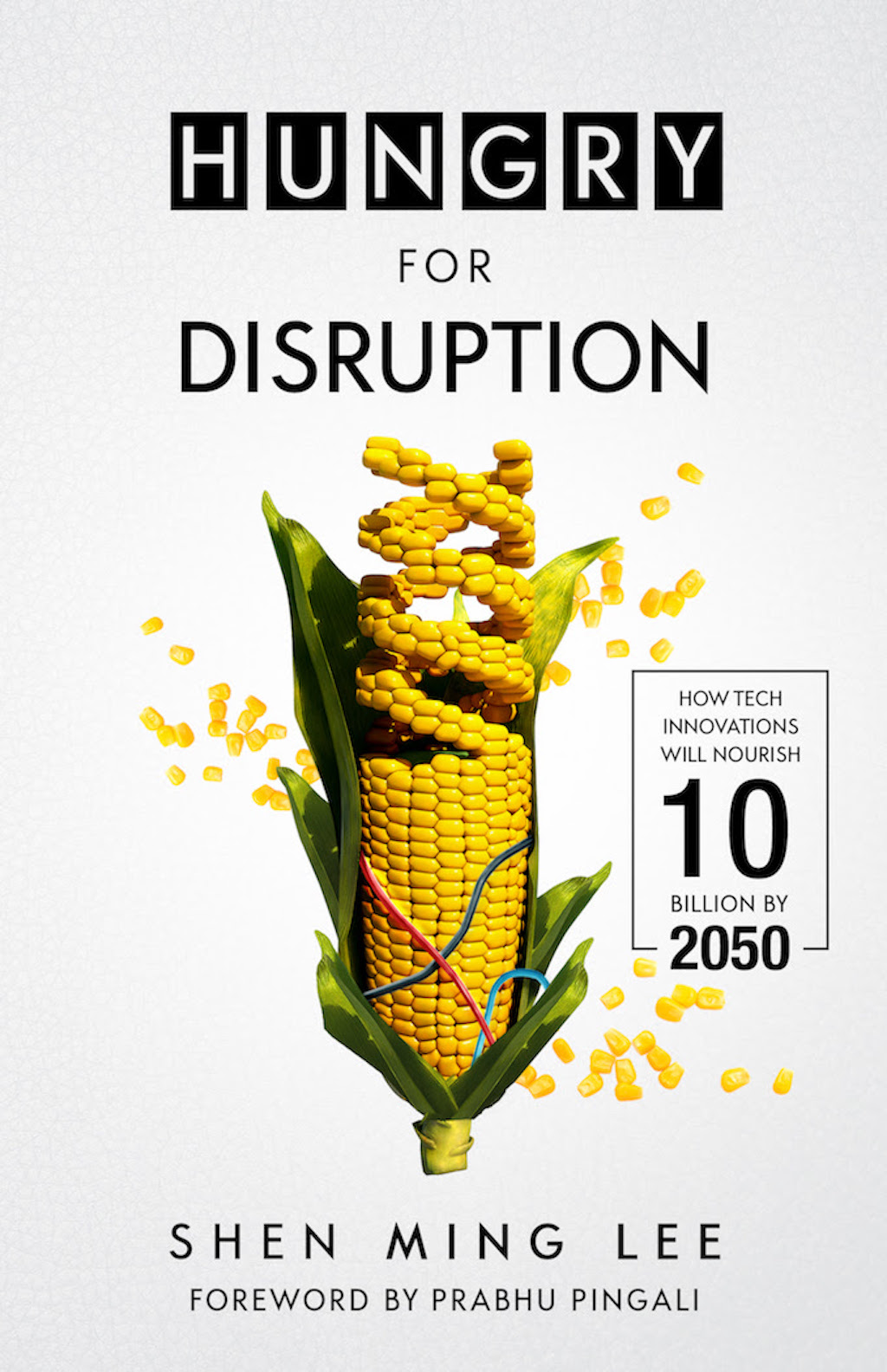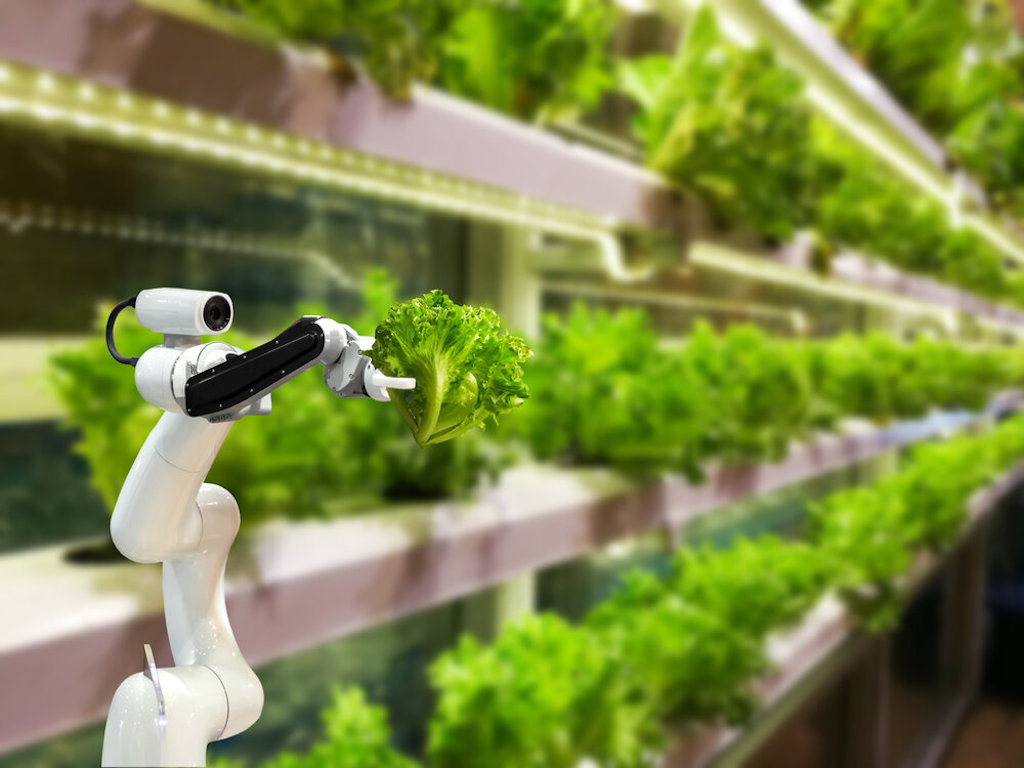6 Mins Read
By: Shen Ming Lee
Hungry For Disruption offers a futuristic vision for embracing the scientific and technological advances in food for the coming decades. The book explores how breakthrough innovations in smart agriculture, novel farming systems, genomics, alternative protein, and food waste management will play a key role in the future of food and agriculture.
Ultimately, the book answers the central question: “How do we leverage tech innovations to increase food production—both quantitatively and qualitatively—in an increasingly resource-scarce future?”
The future of food is fast, fresh, and hungry for disruption, requiring new solutions to today’s most pressing food production problems. Our global food system is broken and in need of large-scale disruption. We simply must harness the power of science and technology to transform it. This book unlocks that power.
1. Collaboration and understanding across a diverse range of stakeholders is essential but severely lacking
Writing this book gave me the opportunity to talk to dozens of researchers at the cusp of cutting-edge scientific advances, farmers on the front lines of our food supply, entrepreneurs working on innovative agrifood solutions, and investors funding the next agrifood tech revolution. Having a birds-eye-view of the agrifood ecosystem and being at the center of different stakeholders soon makes you realize that all these stakeholders are mostly working in silos and not aligning their goals. As a result, there is a substantial amount of information asymmetry in the food system and polarization that is inhibiting fundamental food system change.
Having worked in the agrifood ecosystem and researched the space for the book, what I’ve learnt most of all is that collaboration and understanding across a diverse range of stakeholders is absolutely necessary and that a systems-based thinking approach is needed to make sustainable impact. The urgency for fundamental change will be low if we have misaligned stakeholders that are not on board and working towards the same objectives.
Sustainable change and disruption simply can’t occur without multi-stakeholder engagement. From farmers, to distributors, to restaurateurs, to scientists, to consumers, the future of food requires genuine collaboration and understanding.
2. The Wizards vs. Prophets divide is real and polarization is not productive
In the book The Wizard and The Prophet, science writer Charles Mann explores the stark contrast in environmental visions between Norman Borlaug (the Wizard) and William Vogt (the Prophet). While Borlaug was instrumental in pioneering the Green Revolution that embraced technological innovations which radically accelerated agricultural productivity and expanded global food production, Vogt was a fundamental ecologist who believed that reduced consumption and conservation was the only way to not exceed the earth’s ecological limits.
When answering the question of how to nourish 10 billion people by 2050, I can safely say that there is a massive divide between those who wholeheartedly believe in the power of technological and scientific solutions (the Wizards), and those who strongly believe in traditional and regenerative environmentalism (the Prophets).
For example, take GMOs. Wizards see the potential to use GMOs to create drought-tolerant, disease-resistant, high-yield, and nutritionally optimal crops that bring nourishment for all. The wizards say: “Technology can get us out of any problem.” In contrast, the prophet environmentalists see GMOs as a reckless solution with unknown environmental and health consequences and as a gateway for large corporations to control our food system. The prophets argue that we simply can’t “bio-hack” our way out of every crisis.
Hungry For Disruption may seem like a Wizard book, but I don’t wholly think so. Food and agriculture is more complicated than that. While I speak of sweeping technological disruption, I am also cognizant of the importance of nature, tradition, and instinct in food production. Some of the tech-driven trends mentioned in this book, like indoor farm technology, inadvertently conflict with traditional farmer values like respecting the land on which food is produced.
The truth is, there is no right or wrong camp. Polarization is simply not productive. The divide between “pro-tech” and “pro-environmentalism” is so contentious that it ends up causing more conflict than resolution.
Let’s be pro-better-food-and-ag. There is no right or wrong camp. Both advances in technology and traditional regenerative approaches are needed for a better food system.
3. Localization is crucial to expand the impact of agrifood innovations globally
The crux of this learning is that what works in one market won’t always work in another.
In alternative protein, it’s knowing that factors like culture, diverse dietary habits, opposing perceptions of meat (e.g. as a commodity vs. luxury), and differing levels of awareness around the impacts of animal agriculture will all dictate what kind of products succeed in a market. In other words, the burger simply doesn’t cut it for every market.
In indoor farm technology, it’s understanding that you need to localize and contextualize indoor farming systems since a system that works in the Netherlands won’t necessarily work in land-scarce Singapore or water-scarce Israel.
In the digitization and automation of farms, it’s being conscious of the fact that the majority of farm management software created for the US and European markets won’t bring value to smallholder farmers in Asia where network infrastructure and capacity to use such systems are severely limited.
Creating localized solutions rooted in a deep understanding of a new market is the only way we’ll be able to scale any of the technological and scientific solutions that Hungry For Disruption explores.
4. Equality and inclusivity needs to be a bigger part of conversations about the future of food and agriculture
One of the biggest reasons I started my journey to figure out how our food system will have to change is because of the deep levels of injustice and inequality I saw in our food system. In many of my conversations about food and agriculture, I’ve notice that nuanced issues in areas like food justice are overlooked and severely lacking.
Why does the USDA spend tens of billions of dollars annually on farm subsidies on 5 major crops (wheat, cotton, corn, soybeans, and rice), while no subsidies are given to producers of other crops? Why is it that out of the 820+ million of the world’s hungry, 98% come from developing countries and ironically, 50% of the hungry come from farming families? Might the primary focus on scaling soy and pea-based protein products bite us back with the consequences of monoculture farming? These are fundamental questions rooted in inequality, social justice, and human rights that we need to ask ourselves as we build for a more inclusive food future.
We need more visibility and awareness of these often nuanced and complex issues. To spur more of these conversations, we also need to recognize the interconnectedness of our most pressing social issues.
5. Being a food purist doesn’t preclude you from being a food futurist
My passion for food started with a love for cooking and hospitality, so I consider myself a food purist at heart. While writing my book, I sometimes found my “food purist” values (the importance of nature and tradition in food production) in conflict with the values of being a “food futurist” (the need to innovate and diversify the ways we produce food in a fundamentally broken system). For instance, I wholeheartedly advocate for whole foods and clean-label products, but I also believe that innovations like plant-based meat and cultured meat that some consumers see as “not natural” and “highly processed” are absolutely necessary for a future that needs to move away from industrial animal agriculture. I know I’m not the only one that faces this internal conflict. So, how do we reconcile this clashing of values?
We ground ourselves and learn to embrace both value systems. The solutions we need are not all or nothing. To build a better food future, we need all the options and solutions we can find.
I’ve learnt to be both a food purist and a food futurist. I believe in the power of natural, whole foods that are minimally processed and still think that this bond between man and nature that is nurtured through food is so essential. At the same time, I know how fast we are depleting our soils of essential nutrients and microbes. I know how much agriculture is contributing to global warming. And I know that we cannot continue prioritizing bad calories over nutritious ones. In other words, we simply cannot continue producing food in the same systems that have governed the food industry for the past century. If we are to nourish 10 billion people by 2050 and do so while meeting our global environmental and economic goals, we must also embrace technological innovations like gene-edited crops and cultured meat.

Hungry For Disruption by Shen Ming Lee is available on Amazon.
Lead image courtesy of iStock.



